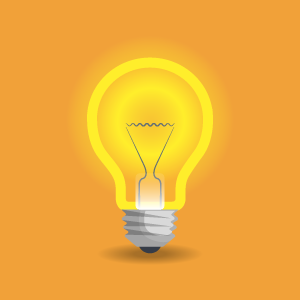What is semantics and what is semantic search? In this article you will learn everything about these two terms and also get an insight into their importance for SEO. Click your way in! ... Continue reading


The Googlebot, the core of the Google search engine, plays a crucial role in the way information on the internet is found and accessed. This advanced web crawler searches, indexes and organises websites to provide users with the most relevant search results. In this article, you can take a closer look at how Googlebot works and learn how it lays the foundation for search engine optimisation (SEO) through efficient crawling and indexing. You will also learn about the importance of Googlebot for users and webmasters and how you can control it using the robots.txt file.
Especially in the world of search engine optimization, the Googlebot has many different names, which can be confusing at first, especially for beginners. Among other things, the bot is known as a crawler. This name comes from the English word “to crawl”. It means something like “crawl”, as the Googlebot “crawls” an web page from top to bottom. This term is one of the better known and is used relatively often.
In addition to Crawler, the Googlebot also goes by the term Spider. This is what the bot was called, especially in the early days of SEO. Similar to the crawler, the term spider was created in an attempt to represent the bot visually. However, it does not crawl from top to bottom, but shimmies down like a spider on its thread, jumps from page to page and thus spins a coherent web of links.
Crawling: The Googlebot’s crawl begins with it going through a list of URLs from previous crawls. Sitemaps or the recognition of links on already crawled pages add new pages and links. The Googlebot crawler performs this process and constantly searches the web.
Indexing : Once the Googlebot has crawled a page and Google has analysed it, the website ends up in a huge index. The Googlebot records relevant keywords, the timeliness of the content and contextual information. It stores the content of each page so that it can be quickly retrieved when a user makes a search query.
Ranking: the indexed pages are then evaluated according to a complex algorithm that takes into account, among other things, the PageRank. This measures the importance of a page based on the number and quality of links from other websites. The algorithm also takes into account other factors such as the relevance of the content to the search query, the user experience and the optimisation of the page for mobile devices.
Google regularly updates its algorithm to improve the relevance and accuracy of search results. These updates can affect how your pages rank and which of your SEO techniques are most effective. It is important that you stay up to date with such changes so that you can adjust your pages accordingly.
It is of the utmost importance for you to optimise your websites so that Googlebot can efficiently crawl and index them. This includes not only the correct setup of the ‘robots.txt’ file, which allows you to control or prohibit the bot’s access to certain areas of the site, but also numerous other aspects:
By taking these factors into account, you can not only improve the efficiency of the Googlebot on your site, but also increase the overall visibility of your content in the search results. This leads to more traffic and ultimately to a higher success of your online presence.
Google Search Console is a free tool that helps you understand and improve your website’s presence in Google search results. It provides insights into how Googlebot sees your page, which pages are indexed, and if there are any crawl errors. You can submit sitemaps and directly check and test the robots.txt, which allows you to control the crawling behaviour.
The crawler can do a lot, but it also has problems with some things. For example, Googlebot still has a hard time understanding images and therefore relies on so-called alt and title tags. These must be entered by the respective content creator. This not only helps Googlebot, but also users with visual impairments, who can have all image content read aloud by their output device.
The bot is also unable to execute JavaScript, which is used on a great many pages. Therefore, important content should not be loaded with JavaScript or hidden behind JavaScript. This is because the crawler cannot find it. Although Google has now developed a bot that can render JavaScript, it only visits the website after the ‘dumber’ bot has examined the page. It is therefore risky to rely on the ‘clever’ bot. If the first crawler doesn’t find any content because it’s all hidden by JavaScript, no signal will be sent to the ‘smarter’ crawler either, because the page will be considered ‘empty’.
A few programming skills are required for the more direct methods of controlling Googlebot. You can use robots.txt to specify pages that the bot is not allowed to visit. Google adheres to this and will not crawl these pages.
The two tags nofollow and noindex are much more commonly used and easier to use. With their help, the crawler receives instructions on how to proceed with links and indexing a page. The noindex tag is located in the head of the HTML and tells the bot that the entire page should not be included in the index. This ensures that only the relevant pages end up in the index. Nofollow tells the crawler not to follow a link. This helps to control the crawler by allowing it to follow only certain links. In addition, no page rank is given. This is because a small portion of your own page rank is given away with each link followed to another domain.
Without the hard-working Googlebot, the world-famous search engine wouldn’t be able to function. It is only through this crawler that pages can be included in the search results at all. This makes it all the more important to know some basic knowledge about how the Googlebot works and how to control it. With a few tricks, you can optimise your ranking and take some of the work off the bot.
Googlebot is the backbone of the Google search engine and crucial to the visibility of websites on the internet. By efficiently crawling and indexing websites, Googlebot enables Google to provide users with accurate and relevant search results. For companies and SEO experts, this means that an optimised website that Googlebot can read well is essential for a successful online presence.
Sophie has always been enthusiastic about content of all kinds, be it moving images, snapshots through the camera lens or audio projects. She is particularly fond of copywriting, however, and enjoys contributing her creativity and talent for language to the wide range of projects in content creation.
Want to learn more about exciting topics in the industry?
Error: Contact form not found.


